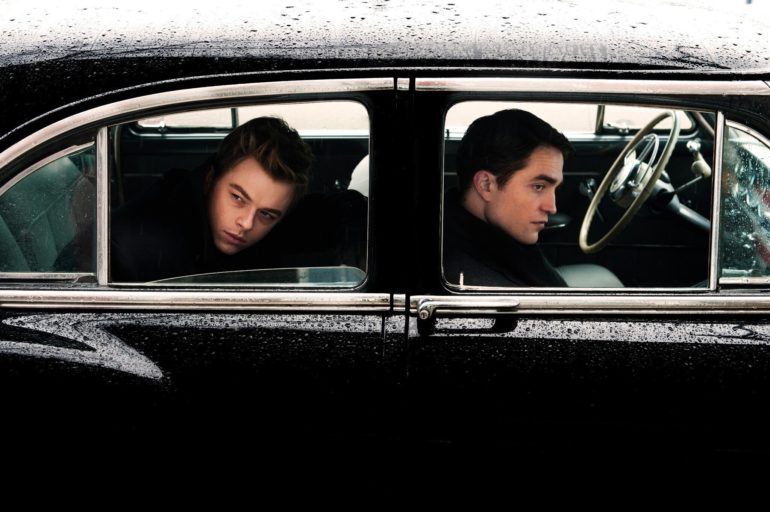How does an icon become an icon? Part of the answer lies in their ability to endure. Sixty years on from his premature death behind the wheel of his Porsche 550, James Dean is one of the twentieth century’s most enduring cultural figureheads. That status is due in part to the preservation of his youth in a series of photographs commissioned by Life Magazine, and taken by Dennis Stock, in early 1955. The photographs offer a definite sense of time and place, and an artist shorn of the publicity machine that was (overly) determined to make him a star. The story behind these snaps is told in Life, which comes courtesy of director Anton Corbijn. The director has captured his share of stars on film, but little of that experience shows itself here.”
The film opens with Stock (Robert Pattinson, in a sufficiently engaged performance) attending a party in Los Angeles hosted by director Nicholas Ray (Peter Lucas). All kinds of infamous names and faces pop by, and are treated with a teasing informality (“This is Natalie, my Rebel lady.”) With a similar indifference (“I’m Jimmy”), Stock is introduced to a young up-and-comer by the name of James Dean. The rising star is played by Dane DeHaan, whose high-toned impersonation gradually melts into a performance of inherent likeability. There’s a slightness to DeHaan’s figure and affectations that help his portrayal of Dean overcome the rebel image. This is also the modus operandi of Corbijn and screenwriter Luke Davies, but it’s an aim that bleeds into the very fabric of the film. By all means, strip away the myth, but only if there’s something really worth exposing behind it all.
Dean’s life was long enough for him to become an icon, yet short enough to leave enough of an enigma to fuel the iconography. Peeling back the layers of the icon would have been revelatory if the script had anything beefier to offer than the idea that Dean was a reluctant star. That’s scarcely a surprise; most stars are. As Jack Warner (Ben Kingsley, sieving his dialogue through a mousy moustache) prepares to market Rebel Without A Cause on its central rebel, Dean just wants to be ‘himself’, whoever that is (to paraphrase Dylan). Enter Stock, whose own situation (divorced, in need of money for child support) couldn’t be more movie-friendly if it tried. He’s charmed enough by Dean to propose a shoot of the actor to the editor of Life, John Morris (Joel Edgerton), but initially he’s not convinced. Oh, if only someone would give these two outside-the-box characters a chance!
The predictability of certain plot beats contributes to the lifelessness of Life. Morris eventually capitulates, and Stock and Dean go to Times Square in the rain to create art. The recreations of 1950s New York are lent a sheen by DoP Charlotte Bruus Christensen, though the whole affair lacks the memorable visual punch of The American or Control. Given the match of filmmaker and material, this is a bitter irony that only gets worse the further we get from New York. Stock and Dean travel to the latter’s hometown of Marion, Indiana to continue the shoot. Aim as Corbijn might for a certain poignancy in these scenes, there’s nothing conveyed in them that Stock’s original photos don’t capture more vividly. For all the effort put into showing Dean’s homelife, Life feels less like an exposé, and more like more like another layer of veneer on the icon, pretty as it is.

